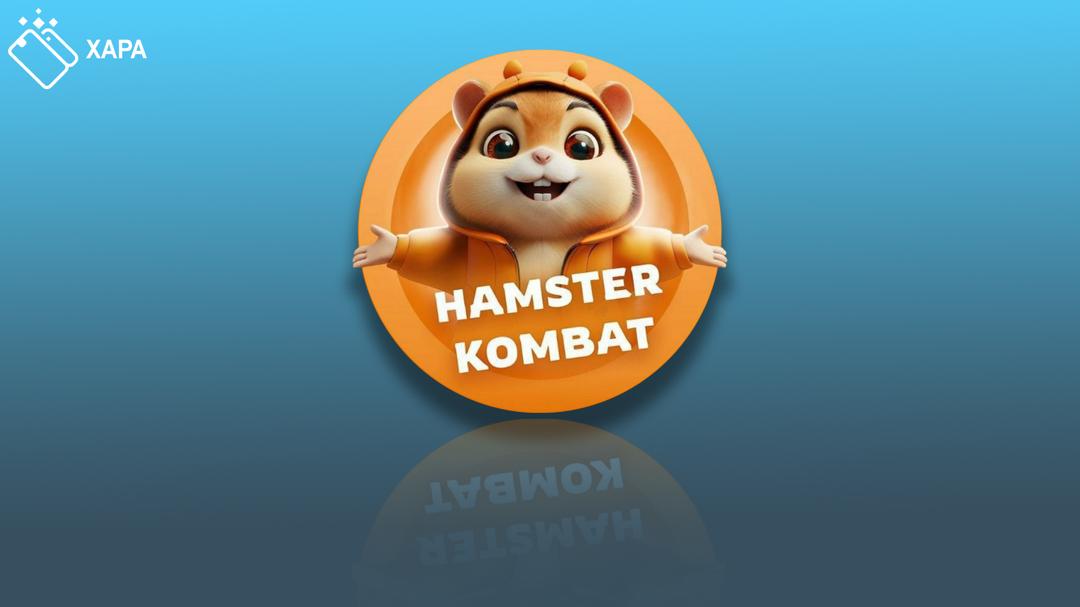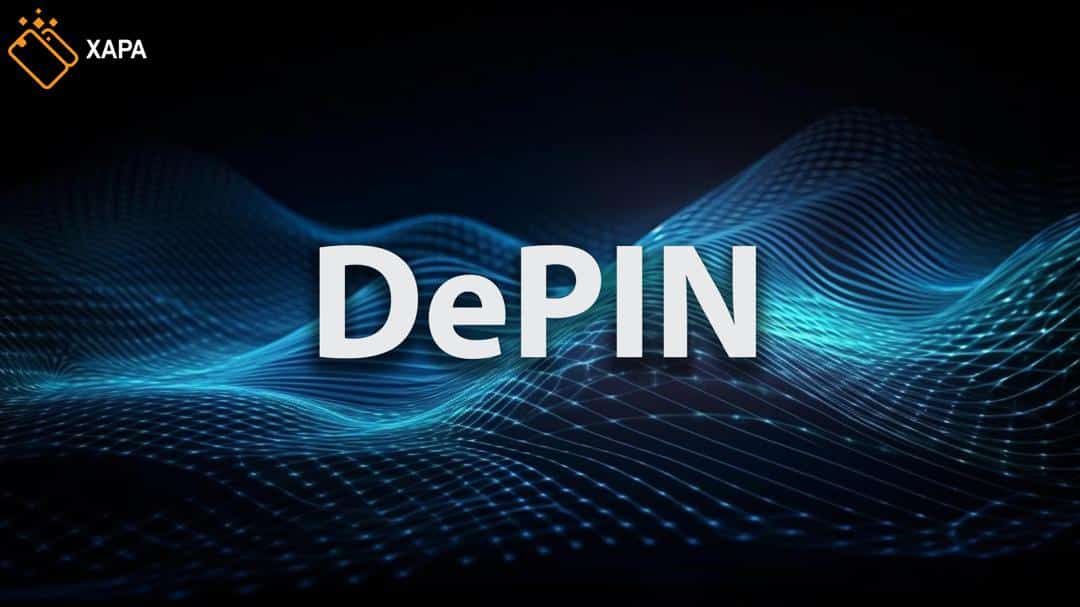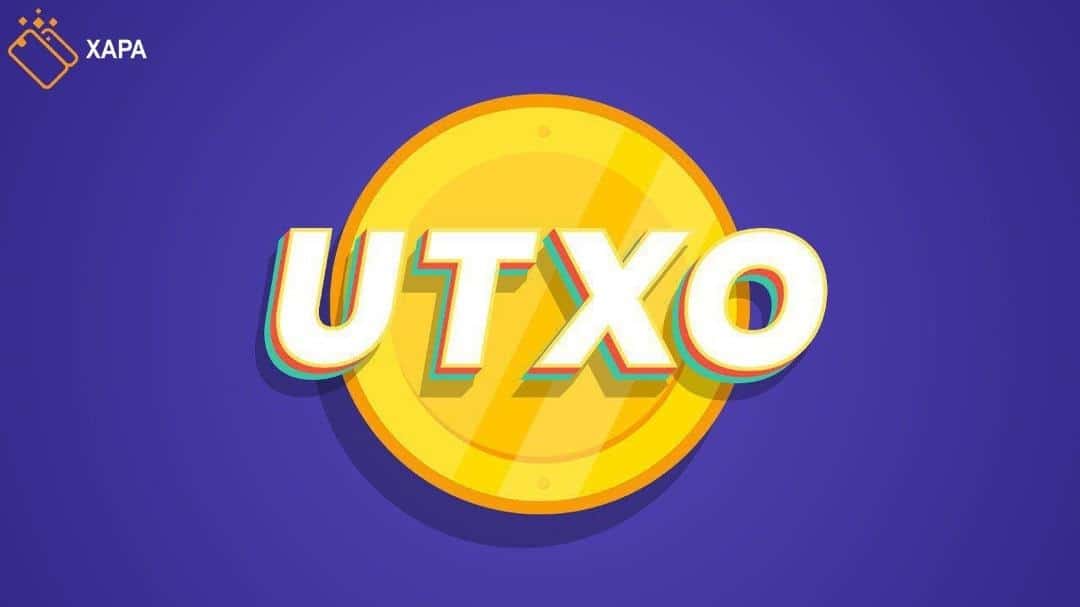
What is Harmony?
There are countless projects in the blockchain world looking for a way to separate themselves fromBitcoin’s proof of work system; an energy-intensive process that requires miners to use their computing power in order to solve sophisticated mathematical puzzles to verify blocks of transactions in exchange for coins. The majority of projects on Ethereum on the other hand, have turned to proof of stake, in which validators, instead of using their computing power, stake their money on the network to earn the right to validate transactions.
That being said, there is one downside to proof of stake that has caused problems compromising two of the most fundamental qualities of an effective blockchain; decentralization and more importantly, security. So, what is it? The system is built in a way that allows a stakeholder, or multiple stakeholders (validators) to work in conspiracy and accumulate funds and co-opt the network. But with Harmony, validators are kept in line. Let’s see what it can do!
What is it?
Harmony is a layer-1 blockchain-based platform that was created in 2018 and was launched in May 2019as part of the Binance Launchpad’s initial exchange offering. The platform runs on the Ethereum network and aims to find a permanent solution to a persistent issue called the “blockchain trilemma”,which is balancing security, scalability and decentralization. In simple words, it seeks to achieve both scalability and decentralization without sacrificing either. Harmony was created with the addeddimension of privacy, referred to as the “fourth trilemma”. It also includes a native token called ONE, which was named with a vision of “For One and For All” and keeps the ecosystem running smoothly.Harmony ONE has a limited supply of 12.6 million and grants governance rights on holders, allowing them to participate in decisions regarding the future of the network. The platform also allows validators to mint these tokens for themselves and later draw in the form of transaction fees.
How does it work?
In order to make the blockchain more efficient and reduce latency, Harmony uses an approach which itcalls “Effective Proof of Stake”. The blockchain is divided into four networks referred to as “shards” thatrun in parallel but are validated by independent groups of stakeholders. What makes Harmony so special is that unlike proof of stake, it randomly assigns validators to each shard in order to avoid attempts to amass funds and take over the network.
Follow Xapa on social media and stay tuned for more!






bonanza
On this platform, you can discover a great variety of casino slots from top providers.
Players can experience traditional machines as well as new-generation slots with high-quality visuals and exciting features.
If you’re just starting out or a seasoned gamer, there’s always a slot to match your mood.
slot casino
The games are available 24/7 and compatible with laptops and mobile devices alike.
No download is required, so you can start playing instantly.
Site navigation is easy to use, making it simple to explore new games.
Register now, and enjoy the world of online slots!
Глаз Бога
Прямо здесь можно получить сервис “Глаз Бога”, что собрать сведения о гражданине через открытые базы.
Сервис работает по фото, обрабатывая актуальные базы в Рунете. Благодаря ему осуществляется 5 бесплатных проверок и детальный анализ по фото.
Инструмент актуален на август 2024 и включает фото и видео. Глаз Бога гарантирует найти профили в соцсетях и покажет сведения в режиме реального времени.
бот Глаз Бога glazboga.net
Это инструмент — помощник при поиске граждан онлайн.
проверить машину по номеру
На данном сайте вы можете получить доступ к боту “Глаз Бога” , который позволяет собрать всю информацию о любом человеке из общедоступных баз .
Данный сервис осуществляет проверку ФИО и предоставляет детали из соцсетей .
С его помощью можно узнать контакты через специализированную платформу, используя фотографию в качестве начальных данных .
поиск по фото
Система “Глаз Бога” автоматически анализирует информацию из множества источников , формируя подробный отчет .
Клиенты бота получают ограниченное тестирование для ознакомления с функционалом .
Платформа постоянно обновляется , сохраняя скорость обработки в соответствии с требованиями времени .
StevenDor
Searching for latest 1xBet promo codes? Our platform offers verified promotional offers like GIFT25 for registrations in 2024. Get up to 32,500 RUB as a welcome bonus.
Activate trusted promo codes during registration to maximize your rewards. Benefit from risk-free bets and exclusive deals tailored for casino games.
Discover daily updated codes for global users with guaranteed payouts.
All promotional code is checked for validity.
Grab exclusive bonuses like GIFT25 to increase winnings.
Valid for new accounts only.
https://www.google.mn/url?q=https://desperado.cz/_lib/pgs/?1xbet_promo_code_maanta.htmlStay ahead with top bonuses – apply codes like 1XRUN200 at checkout.
Enjoy seamless benefits with instant activation.
пробив по паспорту
В этом ресурсе вы можете отыскать боту “Глаз Бога” , который способен проанализировать всю информацию о любом человеке из открытых источников .
Уникальный бот осуществляет проверку ФИО и предоставляет детали из онлайн-платформ.
С его помощью можно узнать контакты через Telegram-бот , используя имя и фамилию в качестве начальных данных .
проверка по vin
Технология “Глаз Бога” автоматически анализирует информацию из проверенных ресурсов, формируя подробный отчет .
Пользователи бота получают 5 бесплатных проверок для ознакомления с функционалом .
Решение постоянно обновляется , сохраняя актуальность данных в соответствии с стандартами безопасности .
сервис проверки авто
В этом ресурсе вы можете найти боту “Глаз Бога” , который может проанализировать всю информацию о любом человеке из публичных данных.
Этот мощный инструмент осуществляет проверку ФИО и предоставляет детали из государственных реестров .
С его помощью можно пробить данные через специализированную платформу, используя имя и фамилию в качестве начальных данных .
поиск машины по вин
Алгоритм “Глаз Бога” автоматически анализирует информацию из проверенных ресурсов, формируя подробный отчет .
Пользователи бота получают 5 бесплатных проверок для тестирования возможностей .
Сервис постоянно совершенствуется , сохраняя высокую точность в соответствии с стандартами безопасности .
Edwardtap
На платформе доступен специализированный бот “Глаз Бога” , который обрабатывает информацию о любом человеке из проверенных платформ.
Система позволяет идентифицировать человека по номеру телефона , формируя отчет из онлайн-платформ.
https://glazboga.net/
AP Royal Oak watches
This website offers detailed information about Audemars Piguet Royal Oak watches, including price ranges and model details .
Explore data on popular references like the 41mm Selfwinding in stainless steel or white gold, with prices reaching up to $79,000.
This resource tracks secondary market trends , where limited editions can appreciate over time.
Audemars prices
Functional features such as water resistance are thoroughly documented .
Check trends on 2025 price fluctuations, including the Royal Oak 15510ST’s retail jump to $39,939 .
MatthewhoaGo
Сертификация и лицензии — ключевой аспект ведения бизнеса в России, гарантирующий защиту от неквалифицированных кадров.
Обязательная сертификация требуется для подтверждения соответствия стандартам.
Для торговли, логистики, финансов необходимо получение лицензий.
https://ok.ru/group/70000034956977/topic/158860661471409
Игнорирование требований ведут к штрафам до 1 млн рублей.
Добровольная сертификация помогает повысить доверие бизнеса.
Соблюдение норм — залог легальной работы компании.
Mariomorne
Ищете ресурсы для нумизматов ? Эта платформа предоставляет исчерпывающие материалы погружения в тему нумизматики!
Здесь доступны уникальные монеты из разных эпох , а также драгоценные предметы .
Изучите архив с характеристиками и детальными снимками, чтобы сделать выбор .
где выгодно купить золотые монеты
Если вы начинающий или эксперт, наши статьи и гайды помогут расширить знания .
Воспользуйтесь возможностью добавить в коллекцию лимитированные артефакты с сертификатами.
Станьте частью сообщества энтузиастов и следите последних новостей в мире нумизматики.
Robertgaisp
Discover the iconic Patek Philippe Nautilus, a luxury timepiece that merges athletic sophistication with refined artistry.
Introduced nearly 50 years ago, this legendary watch revolutionized high-end sports watches, featuring signature angular cases and textured sunburst faces.
From stainless steel models like the 5990/1A-011 with a 45-hour power reserve to luxurious white gold editions such as the 5811/1G-001 with a azure-toned face, the Nautilus caters to both discerning collectors and everyday wearers .
Authentic Patek Nautilus 5712r wristwatches
Certain diamond-adorned versions elevate the design with gemstone accents, adding unparalleled luxury to the iconic silhouette .
According to recent indices like the 5726/1A-014 at ~$106,000, the Nautilus remains a prized asset in the world of premium watchmaking.
Whether you seek a historical model or modern redesign, the Nautilus epitomizes Patek Philippe’s legacy of excellence .
TyroneSmate
Этот сайт предлагает интересные информационные статьи на любые темы.
Здесь можно найти события из жизни, технологиях и разнообразных темах.
Материалы выходят ежедневно, что позволяет держать руку на пульсе.
Удобная структура облегчает восприятие.
https://durovastyle.ru
Любой материал предлагаются с фактчеком.
Мы стремимся к достоверности.
Оставайтесь с нами, чтобы быть всегда информированными.
установка камер видеонаблюдения в магазине
Установка оборудования для наблюдения обеспечит безопасность территории в режиме 24/7.
Современные технологии позволяют организовать надежный обзор даже в ночных условиях.
Вы можете заказать различные варианты оборудования, подходящих для офиса.
установка видеонаблюдения на даче цена
Качественный монтаж и техническая поддержка превращают решение эффективным и комфортным для любых задач.
Обратитесь сегодня, и узнать о персональную консультацию по внедрению систем.
глаз бога поиск по фото
Здесь вы найдете мессенджер-бот “Глаз Бога”, что найти сведения о человеке по публичным данным.
Инструмент активно ищет по фото, используя актуальные базы в Рунете. Благодаря ему доступны 5 бесплатных проверок и глубокий сбор по фото.
Платфор ма актуален на август 2024 и включает мультимедийные данные. Глаз Бога гарантирует найти профили в соцсетях и покажет результаты в режиме реального времени.
как установить глаз бога в телеграм
Данный бот — выбор в анализе граждан онлайн.
Lloydinver
Нужно собрать данные о человеке ? Наш сервис предоставит детальный отчет мгновенно.
Воспользуйтесь уникальные алгоритмы для анализа публичных записей в открытых источниках.
Выясните контактные данные или активность через систему мониторинга с гарантией точности .
глаз бога официальный бот
Бот работает с соблюдением GDPR, используя только общедоступную информацию.
Закажите детализированную выжимку с историей аккаунтов и графиками активности .
Попробуйте проверенному решению для digital-расследований — результаты вас удивят !
Lloydinver
Хотите собрать информацию о человеке ? Наш сервис поможет полный профиль мгновенно.
Используйте уникальные алгоритмы для поиска цифровых следов в открытых источниках.
Узнайте место работы или интересы через систему мониторинга с гарантией точности .
глаз бога актуальный бот
Бот работает с соблюдением GDPR, используя только открытые данные .
Закажите расширенный отчет с историей аккаунтов и списком связей.
Попробуйте проверенному решению для digital-расследований — точность гарантирована!
Lloydinver
Нужно собрать информацию о человеке ? Этот бот предоставит детальный отчет в режиме реального времени .
Используйте уникальные алгоритмы для поиска цифровых следов в открытых источниках.
Выясните контактные данные или интересы через систему мониторинга с гарантией точности .
глаз бога официальный бот
Бот работает в рамках закона , используя только открытые данные .
Закажите детализированную выжимку с историей аккаунтов и списком связей.
Доверьтесь надежному помощнику для исследований — точность гарантирована!
KevinPem
Хотите собрать информацию о пользователе? Наш сервис предоставит полный профиль в режиме реального времени .
Воспользуйтесь уникальные алгоритмы для анализа публичных записей в открытых источниках.
Выясните место работы или интересы через автоматизированный скан с гарантией точности .
глаз бога информация
Система функционирует с соблюдением GDPR, обрабатывая общедоступную информацию.
Получите расширенный отчет с историей аккаунтов и графиками активности .
Доверьтесь проверенному решению для исследований — точность гарантирована!
Michaelirref
Здесь доступна информация о любом человеке, от кратких контактов до полные анкеты.
Базы данных охватывают персон разного возраста, мест проживания.
Сведения формируются из открытых источников, обеспечивая надежность.
Нахождение производится по контактным данным, что обеспечивает работу эффективным.
зеркало глаз бога
Также предоставляются места работы и другая важные сведения.
Все запросы выполняются в соответствии с правовых норм, что исключает разглашения.
Обратитесь к предложенной системе, в целях получения нужные сведения в кратчайшие сроки.
MarvinCag
При выборе семейного врача важно учитывать на квалификацию, умение слушать и доступность услуг .
Убедитесь, что клиника удобна в доезде и сотрудничает с узкими специалистами.
Спросите, принимает ли врач с вашей страховой компанией , и есть ли возможность записи онлайн .
http://ghebra.net/vb/showthread.php?p=64824#post64824
Оценивайте рекомендации знакомых, чтобы оценить отношение к клиентам.
Не забудьте наличие профильного образования, аккредитацию клиники для гарантии безопасности .
Выбирайте — тот, где вас услышат ваши нужды , а процесс лечения будет максимально прозрачным.
Michaelirref
На данном сайте предоставляется сведения по запросу, в том числе подробные профили.
Архивы охватывают персон любой возрастной категории, профессий.
Данные агрегируются на основе публичных данных, подтверждая достоверность.
Обнаружение осуществляется по фамилии, что делает процесс удобным.
глаз бога поиск людей
Помимо этого предоставляются контакты и другая актуальные данные.
Работа с информацией проводятся в соответствии с норм права, что исключает несанкционированного доступа.
Обратитесь к предложенной системе, чтобы найти необходимую информацию без лишних усилий.
JasonBow
Нужно найти данные о человеке ? Этот бот поможет полный профиль в режиме реального времени .
Воспользуйтесь продвинутые инструменты для поиска публичных записей в соцсетях .
Выясните контактные данные или интересы через автоматизированный скан с гарантией точности .
глаз бога по номеру телефона
Бот работает с соблюдением GDPR, обрабатывая открытые данные .
Получите расширенный отчет с геолокационными метками и списком связей.
Попробуйте проверенному решению для digital-расследований — результаты вас удивят !
JasonBow
Gamificação ética envolve medidas que garantem segurança no setor de apostas online, protegendo jogadores e prevenindo dependência .
Operadores devem implementar recursos como autoexclusão, permitindo que os usuários evitem excessos.
A educação sobre comportamento saudável fundamental para identificar sinais de alerta , como perdas excessivas .
https://1win-platforma.com.br/
A verificação de idade evita que menores acessem plataformas, enquanto parcerias com ONGs ampliam a responsabilidade social.
Transparência nas condições de uso assegura justiça, com auditorias independentes validando operações .
KevinPem
Хотите собрать данные о человеке ? Этот бот поможет детальный отчет мгновенно.
Используйте продвинутые инструменты для поиска публичных записей в открытых источниках.
Узнайте контактные данные или интересы через систему мониторинга с верификацией результатов.
глаз бога проверка
Бот работает с соблюдением GDPR, обрабатывая общедоступную информацию.
Получите расширенный отчет с историей аккаунтов и графиками активности .
Доверьтесь проверенному решению для исследований — точность гарантирована!
Stephenblage
¿Quieres un sistema de natación en casa? Las marcas Intex y Bestway ofrecen soluciones innovadoras para todas las familias .
Los modelos con armazón garantizan durabilidad superior , mientras que los modelos hinchables ofrecen comodidad .
Colecciones destacadas incluyen sistemas de limpieza, asegurando higiene óptima .
En patios pequeños, las piscinas compactas de 3 m se adaptan perfectamente .
Además, accesorios como cobertores térmicos, barandillas resistentes y juguetes acuáticos mejoran la experiencia .
Por su calidad certificada, estas piscinas cumplen estándares europeos.
https://www.mundopiscinas.net
JaimeRom
Доставка грузов из Китая в Россию проводится через морские маршруты , с проверкой документов на в портах назначения.
Импортные сборы составляют в диапазоне 15–20%, в зависимости от категории товаров — например, готовые изделия облагаются по максимальной ставке.
Для ускорения процесса используют серые каналы доставки , которые быстрее стандартных методов , но связаны с дополнительными затратами.
Доставка грузов из Китая
В случае легальных перевозок требуется предоставить паспорта на товар и акты инспекции, особенно для технических устройств.
Сроки доставки варьируются от нескольких дней до двух недель , в зависимости от вида транспорта и загруженности контрольных пунктов.
Стоимость услуг включает логистику , таможенные платежи и услуги экспедитора, что требует предварительного расчёта .
Jerrykag
Back then, I believed following instructions was enough. Doctors give you pills — you nod, take it, and move on. It felt clean. But that illusion broke slowly.
Then the strange fog. I blamed stress. Still, my body kept rejecting the idea. I read the label. The warnings were there — just buried in jargon.
I started seeing: one dose doesn’t fit all. The reaction isn’t always immediate, but it’s real. Damage accumulates. And still we keep swallowing.
Now I pay attention. Not because I’m paranoid. I challenge assumptions. But I don’t care. This is survival, not stubbornness. The lesson that stuck most, it would be Why would someone take Provigil?.
Harlanlible
La gamme MARQ® de Garmin représente un summum de luxe avec des finitions raffinées et connectivité avancée .
Conçue pour les sportifs , elle propose une polyvalence et autonomie prolongée , idéale pour les aventures en extérieur grâce à ses modes sportifs.
Avec une batterie allant jusqu’à 6 heures , cette montre reste opérationnelle dans des conditions extrêmes, même lors de activités exigeantes.
https://garmin-boutique.com/venu
Les fonctions de santé incluent la surveillance du sommeil , accompagnées de notifications intelligentes , pour les utilisateurs exigeants.
Facile à personnaliser , elle s’intègre à votre quotidien , avec une interface tactile réactive et synchronisation sans fil.
Winfordhoold
Дом Balenciaga известен стильными аксессуарами , разработанными фирменной эстетикой.
Каждый аксессуар обладает фирменными деталями, например фирменный логотип .
Применяемые ткани гарантируют долговечность сумки.
сумки Balenciaga заказать
Востребованность коллекций увеличивается среди модников , делая выбор символом роскоши .
Сезонные новинки позволяют владельцу подчеркнуть индивидуальность в компании .
Инвестируя в сумки Balenciaga , вы получаете стильный элемент , и настоящий арт-объект .
JosephvaF
Аксессуары Prada представляют собой вершиной моды за счёт безупречному качеству.
Применяемые ткани и кожа гарантируют надёжность , а детальная обработка демонстрирует премиум-статус .
Узнаваемые силуэты дополняются фирменными деталями, создавая современный облик.
https://sites.google.com/view/sumkiprada/index
Эти аксессуары универсальны на вечерних мероприятиях, сохраняя стиль в любой ситуации .
Ограниченные серии усиливают статус владельца , превращая любой аксессуар в инвестицию в стиль .
Опираясь на историю бренд развивает инновации , оставаясь верным классическому шарму в каждой детали .
Bennieembow
Shimmering liquid textiles redefine 2025’s fashion landscape, blending cyberpunk-inspired aesthetics with sustainable innovation for runway-ready statements .
Gender-fluid silhouettes challenge fashion norms, featuring modular designs that transform with movement across formal occasions.
AI-curated patterns human creativity, creating one-of-a-kind textures that shift in sunlight for dynamic visual storytelling .
https://www.silverstripe.org/ForumMemberProfile/show/251289
Circular fashion techniques lead the industry , with upcycled materials reducing environmental impact without compromising luxurious finishes .
Holographic accessories elevate minimalist outfits , from nano-embroidered handbags to 3D-printed footwear designed for modern practicality .
Retro nostalgia fused with innovation defines the year, as 2000s logomania reinterpret archives through climate-responsive materials for forward-thinking style.
RichardHer
This iconic Rainbow Daytona epitomizes luxury with its colorful ceramic chapter ring.
Made from 18k white gold , it blends sporty chronograph functionality with sophisticated design elements.
Produced as small batches , this timepiece attracts discerning collectors worldwide.
Rolex Cosmograph Daytona Rainbow order
The meticulously set gems on the outer ring creates a spectrum that stands out uniquely.
Equipped with Rolex’s self-winding chronograph movement , it ensures reliable performance for daily wear .
A symbol of status , the Daytona Rainbow reflects timeless desirability in every detail .
Jerrymop
Discover an abundance of interesting and practical materials at our platform.
Covering expert articles to daily updates , there’s something for everyone .
Keep updated with fresh content crafted to educate and engage visitors.
Here delivers a seamless interface ensuring you can access tools you need .
Connect with of a growing community who appreciate our high-quality insights consistently.
Begin your journey immediately and discover wealth of knowledge these resources provides .
https://xbmc.us
CharlesBon
Надёжная резина — это ключевой элемент на дороге, обеспечивающая надёжное торможение даже в дождь и снег .
Подходящие по сезону шины снижают вероятность потери контроля в условиях гололёда, сохраняя вашу безопасность .
Покупка проверенных покрышек экономят средства на обслуживание благодаря низкому сопротивлению .
Плавность хода определяется качества протектора , а также прочностью каркаса .
Регулярная замена изношенной резины защищает от преждевременного износа , гарантируя долговечность авто .
Отнеситесь серьёзно к выбору — это определяет сохранность жизни в пути .
https://twsing.com/forum.php?mod=viewthread&tid=190838&pid=313643&page=48&extra=page%3D1#pid313643
KevinLix
Эффективные решения учёта рабочего времени обеспечивают повышение эффективности .
Удобный интерфейс устраняет ошибки в планировании графиков.
Администраторам становится проще проектные задачи в режиме реального времени .
https://measiedu.org/finance/work-discipline-and-kpi-how-to-link-pok/
Сотрудники имеют удобный учёт к своим данным .
Внедрение таких систем значительно ускоряет внутренние операции в кратчайшие сроки.
Практика формирует слаженность при распределении задач, укрепляя лояльность команды .
Carlospeeni
В приложении Telegram появилась новая функция — звёзды.
Они предназначены для поддержки авторов.
Каждый подписчик может отправлять звёзды чатам.
купить звезды телеграмм
Звёзды обмениваются в доход.
Это удобный способ оценить труд.
Попробуйте новшество уже сейчас.
Michaelsluro
Домашняя работа имеют ключевую роль в обучении.
Они помогают повторять знания.
Систематическая работа домашних заданий поддерживает самостоятельность.
Задания также способствуют распределению усилий.
https://naphopibun.go.th/forum/suggestion-box/36714-ziv-p-shchi-v-bshch-bicn-sh-lini-u-pri-d-shnih-r
Благодаря им ученики готовятся к проверочным работам.
Учителя могут оценить уровень знаний.
Таким образом, домашние задания остаются важными для успеха.
Randydox
The platform allows you to change clothes on images.
It uses AI to fit outfits naturally.
You can test various styles right away.
xnudes.ai|Superb Clothes Changer Web Tool
The results look real and modern.
It’s a handy option for fashion.
Upload your photo and select the clothes you prefer.
Start exploring it right away.
CharlesDouts
Here you can explore a lot of valuable information.
It is made to support you with multiple topics.
You will see easy-to-read explanations and practical examples.
The content is frequently improved to stay up-to-date.
https://findradio.us
It’s a great resource for self-development.
All users can benefit from the materials here.
Feel free to reading the site today.
Randydox
This tool allows you to swap clothes on images.
It uses AI to adjust outfits seamlessly.
You can try various styles in seconds.
xnudes.ai
The results look real and stylish.
It’s a useful option for fashion.
Submit your photo and pick the clothes you prefer.
Enjoy trying it today.
Danielted
Подбор психолога — важный шаг на пути к поддержанию эмоционального здоровья.
Для начала стоит определить свои задачи и запросы от консультации с экспертом.
Хорошо проверить подготовку и опыт специалиста.
Комментарии других клиентов могут помочь сделать выбор более обоснованным.
Также нужно проверить методы, которыми пользуется консультант.
https://coachstoreus.com/%D0%BF%D1%81%D0%B8%D1%85%D0%B8%D0%B0%D1%82%D1%80-%D0%B2-%D1%86%D0%B5%D0%BD%D1%82%D1%80%D0%B5-%D1%8D%D0%BC%D0%BF%D0%B0%D1%82%D0%B8%D1%8F-%D0%BF%D0%BE%D0%BC%D0%BE%D1%89%D1%8C-%D0%BA%D0%BE/
Начальная консультация поможет понять, насколько вам комфортно общения.
Важно учитывать стоимость и режим приёма (например, удалённо).
Взвешенный выбор специалиста способен ускорить процесс изменений.
Scottbug
Поиск специалиста — ответственный этап на пути к улучшению эмоционального здоровья.
Прежде всего стоит понять свои цели и пожелания от сотрудничества с психологом.
Важно изучить подготовку и специализацию консультанта.
Рекомендации других клиентов могут помочь сделать решение более обоснованным.
Также нужно проверить методы, которыми пользуется психолог.
https://dryconknox.com/%D0%BF%D1%81%D0%B8%D1%85%D0%B8%D0%B0%D1%82%D1%80-%D0%B8-%D0%BF%D1%81%D0%B8%D1%85%D0%BE%D1%82%D0%B5%D1%80%D0%B0%D0%BF%D0%B5%D0%B2%D1%82-%D0%BA%D0%BE%D0%BC%D0%BF%D0%BB%D0%B5%D0%BA%D1%81%D0%BD%D1%8B/
Начальная консультация поможет оценить, насколько подходит стиль общения.
Важно помнить тариф и формат сотрудничества (например, удалённо).
Правильный выбор специалиста позволит ускорить процесс изменений.
Scottbug
Поиск специалиста — ответственный этап на пути к улучшению эмоционального здоровья.
Сначала стоит определить свои задачи и запросы от сотрудничества с психологом.
Хорошо проверить квалификацию и опыт психолога.
Отзывы бывших клиентов могут поспособствовать сделать выбор более осознанным.
Также нужно проверить подходы, которыми работает специалист.
https://mywisegranny.com/%D0%BF%D1%81%D0%B8%D1%85%D0%B8%D0%B0%D1%82%D1%80-%D0%B4%D0%BB%D1%8F-%D0%BF%D0%BE%D0%B4%D1%80%D0%BE%D1%81%D1%82%D0%BA%D0%BE%D0%B2-%D0%BF%D0%BE%D0%B4%D0%B4%D0%B5%D1%80%D0%B6%D0%BA%D0%B0-%D0%B2-%D0%BA/
Стартовая консультация поможет оценить, насколько подходит стиль общения.
Следует учитывать тариф и режим приёма (например, онлайн).
Правильный выбор психолога способен ускорить движение к целям.
ErniemooWl
Подбор консультанта — серьёзный процесс на пути к поддержанию эмоционального здоровья.
Прежде всего стоит уточнить свои потребности и запросы от консультации с психологом.
Полезно изучить образование и опыт специалиста.
Комментарии прошлых обратившихся могут поспособствовать сделать выбор более уверенным.
https://zanevqhw98765.ka-blogs.com/90077642/%D0%94%D0%B5%D1%82%D1%81%D0%BA%D0%B8%D0%B9-%D0%BF%D1%81%D0%B8%D1%85%D0%BE%D1%82%D0%B5%D1%80%D0%B0%D0%BF%D0%B5%D0%B2%D1%82-%D0%9C%D0%BE%D1%81%D0%BA%D0%B2%D0%B0-%D0%A6%D0%B5%D0%BD%D1%82%D1%80-%D0%BC%D0%B5%D0%BD%D1%82%D0%B0%D0%BB%D1%8C%D0%BD%D0%BE%D0%B3%D0%BE-%D0%B7%D0%B4%D0%BE%D1%80%D0%BE%D0%B2%D1%8C%D1%8F-%D0%AD%D0%BC%D0%BF%D0%B0%D1%82%D0%B8%D1%8F
Также следует учитывать методы, которыми работает психолог.
Начальная консультация помогает оценить, насколько вам комфортно общения.
Важно помнить тариф и способ сотрудничества (например, онлайн).
Взвешенный выбор психолога поможет улучшить процесс изменений.
RobertSeark
Отечественная мода отличается уникальностью и разнообразной культурой.
Нынешние бренды опираются в этнических мотивах, создавая стильные образы.
На подиумах всё чаще представлены необычные решения цветов.
Отечественные дизайнеры поддерживают ответственный подход к разработке одежды.
tatiana wedding dress
Потребители всё больше интересуется самобытные бренды из России.
Платформы о моде рассказывают о новых показах и дизайнерах.
Перспективные дизайнеры получают признание как в России, так и за границей.
В итоге отечественная индустрия успешно совершенствоваться, объединяя культуру и современность.
Kennethdrome
Выбор остеопата — важный шаг на пути к реабилитации.
Прежде всего стоит определить свои задачи и запросы от терапии у профессионала.
Полезно изучить подготовку и стаж выбранного остеопата.
Рекомендации клиентов помогут сформировать уверенный выбор.
https://addcatalogs.manyweb.ru/review/xn--d1abqnbbri.xn--p1ai.html
Также нужно обратить внимание методы, которыми пользуется остеопат.
Начальная встреча позволяет оценить, насколько подходит вам общение и подход доктора.
Важно сравнить стоимость и формат приёма (например, очно).
Правильный выбор специалиста способен ускорить реабилитацию.
LeonardDremn
Creative photography often focuses on revealing the harmony of the human form.
It is about light rather than surface.
Skilled photographers use subtle contrasts to create atmosphere.
Such images celebrate authenticity and individuality.
https://xnudes.ai/
Each photo aims to evoke feelings through pose.
The goal is to portray inner grace in an respectful way.
Audiences often value such work for its creativity.
This style of photography combines art and sensitivity into something truly timeless.
LindsayJed
Creative photography often focuses on expressing the harmony of the natural shape.
It is about expression rather than appearance.
Experienced photographers use subtle contrasts to create mood.
Such images celebrate artistry and individuality.
https://xnudes.ai/
Each photo aims to evoke feelings through pose.
The goal is to show inner grace in an respectful way.
Observers often appreciate such work for its creativity.
This style of photography blends art and aesthetics into something truly timeless.
LindsayJed
Creative photography often focuses on highlighting the harmony of the natural shape.
It is about light rather than surface.
Skilled photographers use natural tones to convey emotion.
Such images emphasize authenticity and individuality.
https://xnudes.ai/
Every frame aims to show emotion through form.
The goal is to present human beauty in an elegant way.
Viewers often appreciate such work for its depth.
This style of photography combines technique and vision into something truly expressive.
RichardEmuch
Современные платформы знакомств помогают пользователям общаться в удобном формате.
Такое общение расширяет кругозор.
Большинство людей отмечают, что онлайн-знакомства помогают отдохнуть после работы.
Это простой способ для поиска общения.
https://ksadm.ru/muzhchina-i-zhenshhina/inczest-porno-mify-interes-i-kulturnyj-kontekst/
Самое важное — сохранять открытость и искренность в переписке.
Позитивное общение помогает эмоциональное состояние.
Такие платформы разработаны для тех, кто ищет друзей по духу.
Онлайн-знакомства становятся способом провести время с удовольствием.